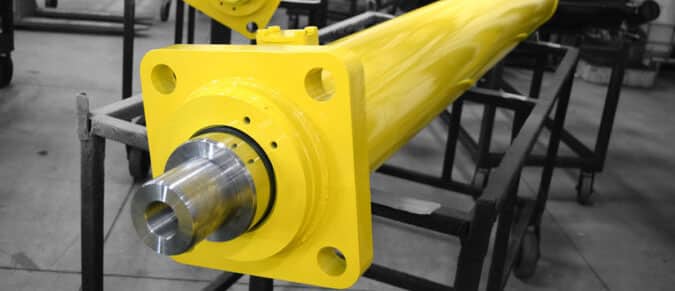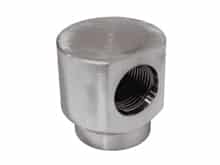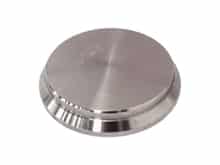Hydraulic Cylinder Mounts
Choosing the right hydraulic cylinder for your application needs remains a focal point for hydraulic cylinder design and manufacturing. However, selecting the correct hydraulic cylinder mount can minimize accelerated wear and tear in addition to keeping your cylinder running at optimal performance levels. Stability and strength provided by cylinder mounts can also aid in preventing misalignment issues that can cause hydraulic cylinder failure.
Find out the differences between cylinder mounting styles and learn more about the advantages a cylinder mount can provide.
Different Cylinder Mounting Types
Due to the linear movement and force of hydraulic cylinders, performance can be enhanced by selecting the proper cylinder mount for your hydraulic equipment. Available in pivot and fixed styles, cylinder mounts can absorb force and decrease wear and tear on rod seals and bearings. Common cylinder mount styles include centerline, flange, pivot, and side mount options.
Centerline Cylinder Mounts
As a fixed mount, centerline mounts are a straight line mounting style that provides support for your hydraulic cylinder along the centerline. Centerline mounting options include tie-rod or lug mounts.
Tie Rod Centerline Mounts
- Ideal for high internal pressure, cylinder tie rods extend at the cap end of the cylinder. These cylinder mounts provide centerline support and are best for short stroke applications.
Centerline Lug Mounts
- Lug mounts are a fixed-type mount that prevents cylinder movement. These cylinder mounts can be attached to the sides of a cylinder or welded to the head and cap. In high-pressure environments, use dowel pins to secure the cylinder. Lug mounts offer high strength and rigidity but have a lower tolerance for misalignment.
Flange Cylinder Mounts
Flange options include rod end rectangular flanges or cap end mounting. This mount has a flat square, circular or rectangular design that does not require joints or bearings for mounting. Flange mounts are extremely strong and rigid and work well for mounting stationary hydraulic cylinders. Though strong, flange mounts do not tolerate misalignment as well as other types of cylinder mounts.
Pivot Cylinder Mounts
Well-suited for applications where loads travel on an arc, pivot cylinder mounts are available in clevis and trunnion mounting styles. As the name implies, pivot mounts allow for movement while still absorbing force.
Clevis Mounts
- Clevis mounts are a type of pivot mount that attaches to the end of the cylinder rod. These mounts can be used on an angle, horizontally, or vertically and are designed for applications where the cylinder load must move through an arc as it extends and retracts. Clevis mounts are commonly used on shorter stroke cylinders in excavators and other mobile equipment.
Trunnion Mounts
- Trunnion mounts are a pivot-type mount that can be positioned at the head, cap, or intermediate position on the hydraulic cylinder. These mounts offer slightly more strength and stability than clevis mounts and attach with bearings instead of pins.
Side Mounts
- Side mounts absorb force away from the cylinder. These hydraulic cylinder mounts are available in side lug, end lug, and side tapped styles, side mounts have lugs positioned on the sides or ends.
Cylinder Mounting Components
Having the right mounting components can make aligning your mount and cylinder easier. Common mounting components include:
- Rod Clevis
- Pivot Pins
- Mounting Ears
- Lug Mounts
- Eye Brackets
- Spherical Rod Eyes
- Spherical Rod Brackets
Benefits of Hydraulic Cylinder Mounting
With a variety of mounting styles to choose from, cylinder mounts can stabilize your hydraulic cylinders while optimizing performance. Improper mounting can result in side loading which can ultimately lead to cylinder failure due to accelerated rod bearing wear. With proper alignment, cylinders can work at optimal levels, increasing the longevity of the cylinder’s life cycle.
Choose the Right Cylinder Mount for Your Needs
Let us help you select the best cylinder mount for your application requirements. Contact us to discuss your mounting specifications today.





































